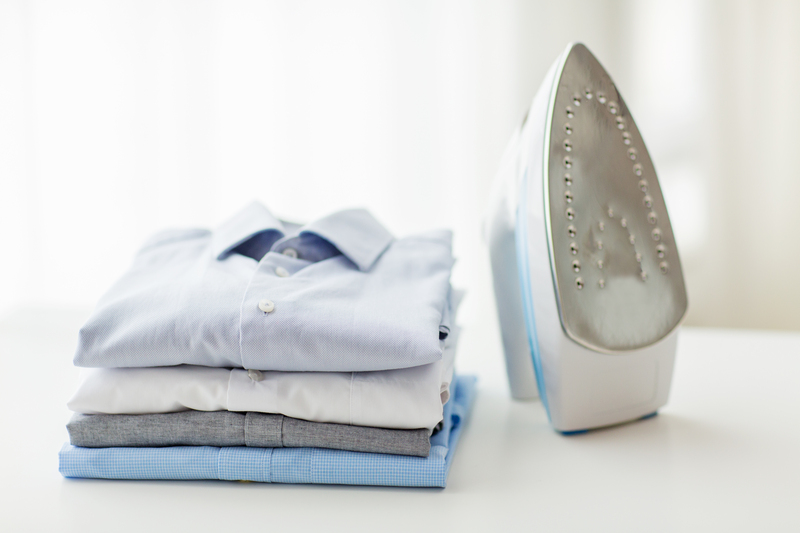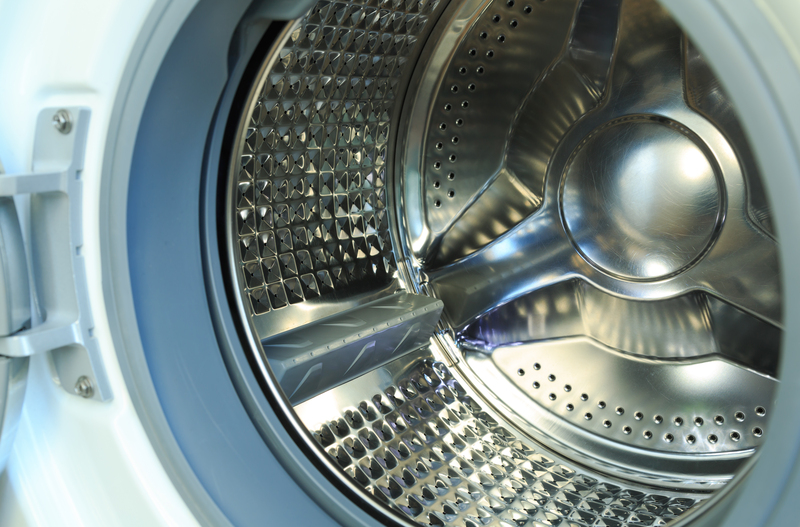Effective Techniques for Polishing Your Jewellery
Posted on 09/09/2025
Effective Techniques for Polishing Your Jewellery
Polishing jewellery is an essential skill for anyone hoping to restore their favourite pieces' original brilliance. Whether you wear timeless gold or modern sterling silver, learning effective jewellery polishing techniques ensures longevity, value, and beauty for your treasures. This comprehensive guide explores the best practices, safe products, and professional tips for keeping your jewellery radiant and sparkling in every light.

Why Jewellery Polishing Matters
Jewellery polishing serves more than cosmetic purposes. Over time, rings, necklaces, and bracelets encounter oils, sweat, and environmental pollutants. These factors create a dull surface or tarnish, making even the most expensive pieces look lacklustre. Regular polishing will:
- Maintain the natural luster and shine of your jewellery
- Remove surface grime, fingerprints, and everyday dirt
- Prevent deep tarnish that can degrade metals over time
- Enhance the value and longevity of your jewellery collection
Understanding how to polish your jewellery correctly is vital not just for aesthetics but for protecting your most cherished items from unnecessary wear or damage.
Understanding Jewellery Materials
Before diving into effective jewellery polishing techniques, it's crucial to identify the materials you're working with. Each type of jewellery--gold, silver, platinum, gemstones, and costume jewellery--requires a slightly different approach for cleaning and polishing:
- Gold: Softer and resistant to tarnish but prone to scratches.
- Silver: Susceptible to tarnish but responds well to specific polishes.
- Platinum: Durable, needs gentle polishing to avoid surface dulling.
- Gemstones: Some gems are soft or porous; requires caution.
- Costume Jewellery: Made from plated metals and glass; avoid abrasive polishing.
The correct technique for each metal or stone protects its finish and integrity. If you're unsure, consult your jeweller, especially for antiques or valuable items.
Top Jewellery Polishing Techniques You Can Use at Home
1. Gentle Hand Polishing with a Microfiber Cloth
This is the simplest jewellery polishing method for routine maintenance. Here's how to do it:
- Use a clean, dry, and soft microfiber or jewellery cloth.
- Gently rub the surface of your jewellery in a back-and-forth motion.
- For intricate designs, use a soft toothbrush to reach crevices.
- Avoid circular motions to reduce micro-scratches.
This technique works wonders for removing fingerprints, oils, and light tarnish, especially from silver and gold pieces.
2. Specialized Jewellery Polishing Cloths
Jewellery polishing cloths are impregnated with safe cleaning and polishing agents. They work well for:
- Removing oxidation from silver and gold without abrasives
- Restoring shine to watches, bracelets, and earrings
- Light cleaning of gemstone settings
Always follow the manufacturer's instructions. Replace the cloth regularly for best results.
3. Using Commercial Jewellery Polishes and Cleaners
For a deeper clean, choose jewellery polishes or dips suitable for your piece's metal and stones. Effective use includes:
- Using a minimal amount; never soak porous stones
- Applying the polish with a soft cloth, then buffing gently
- Rinsing well and drying completely
Warning: Avoid harsh chemicals on costume jewellery or stones like opal, pearl, or turquoise.
4. Homemade Jewellery Cleaning and Polishing Solutions
If you prefer DIY jewellery polishing options, try these safe, household solutions:
- Mild Soap and Water: Mix a few drops of gentle dish soap with warm water. Soak for a few minutes, brush gently, and rinse.
- Baking Soda Paste (for Silver): Combine baking soda with water, apply with a soft cloth, polish gently, and rinse well.
- Aluminium Foil and Baking Soda (for heavy tarnish): Line a bowl with foil, sprinkle baking soda, pour hot water, and place your silver item in the solution. Tarnish will transfer to the foil.
Always test homemade solutions on a small, inconspicuous area first. Avoid abrasives on gold or plated pieces.
5. Ultrasonic Jewellery Cleaners
Ultrasonic cleaners use high-frequency sound waves and a liquid solution to clean jewellery. They are highly effective for:
- Removing dirt from settings and intricate designs
- Restoring brilliance in diamonds and hard stones
Not suitable for: Porous stones (pearls, opals, emeralds) or plated items.
Professional Jewellery Polishing Methods
For heirloom, high-value, or heavily tarnished pieces, consider a professional jewellery polishing service. Professionals use:
- Polishing wheels: For buffing gold and platinum to a high shine
- Steam cleaners: To blast away residues
- Specialized polishes: For antiques and luxury items
- Rhodium plating: For white gold brightening
While costlier, these services can restore life to jewellery that no home method can match.
Effective Polishing Techniques for Different Jewellery Types
Polishing Gold Jewellery
Gold is resistant to tarnish but can still become dull over time. For best results:
- Use a professional gold cleaning cloth for light polishing.
- For deeper cleaning, soak in warm soapy water and gently brush.
- For 18K or delicate gold, avoid abrasive pastes.
- Polish in one direction to minimize scratches.
Tip: If your gold jewellery has gemstones, ensure they are suitable for soaking first.
Cleaning and Polishing Silver Jewellery
Silver tarnishes quickly but responds well to multiple polishing methods:
- Use a specialized silver cleaning cloth for daily maintenance.
- Try the baking soda and aluminium foil method for heavy tarnish.
- Avoid liquid polishes on pieces with antique finishes (oxidized silver).
Silver-polishing creams and pastes can revive antique items when applied with care.
Caring for Gemstone and Diamond Jewellery
Diamonds are durable but attract grease and dirt.
- Gently brush with a soft brush in soapy water.
- Rinse and polish with a lint-free cloth.
- Ultrasonic cleaners work well--avoid if the setting has fragile stones.
Coloured gemstones vary in hardness and porosity:
- Check each gem's cleaning guidelines.
- Never soak porous stones--wipe gently instead.
- Use jewellery wipes for routine shine.
Polishing Costume and Plated Jewellery
Costume jewellery often uses plated metals or glass. Abrasive methods can remove the plating, so:
- Wipe gently with a dry, ultra-soft cloth.
- Avoid all chemical dips and baking soda pastes.
- If necessary, lightly dampen the cloth--never soak.
Note: When plating wears thin, re-plating by a professional may be the only solution for restoration.
Tips for Safe and Effective Jewellery Polishing
- Read Labels: Always ensure cleaners and polishes are safe for your type of jewellery.
- Check Settings: Loose stones can fall out during polishing; inspect and secure first.
- Be Gentle: Excess force causes scratches or damages soft stones and settings.
- Store Properly: Keep polished jewellery in anti-tarnish pouches or lined boxes to prolong shine.
- Polish Regularly, Not Excessively: Over-polishing wears down metals over time.
How Often Should You Polish Your Jewellery?
The frequency of jewellery polishing depends on how often each piece is worn and the environment it's exposed to. General guidelines include:
- Polish everyday rings and bracelets every 2-3 weeks for maximum shine.
- Perform a deep clean and polish before important events or after heavy wear.
- Costume and plated jewellery should be polished only as needed to prevent wearing away the finish.
- Store rarely worn pieces in anti-tarnish materials and polish lightly once or twice a year.
Common Mistakes to Avoid When Polishing Jewellery
- Using Toothpaste: Abrasive and can scratch metals and stones.
- Using Acidic Cleaners: Vinegar, lemon juice, and ammonia can damage gemstones and metal finishes.
- Mixing Jewellery in Ultrasonic Cleaners: Different metals or soft stones may become damaged or scratched.
- Forgetting to Dry Thoroughly: Moisture can cause silver to tarnish faster and damage settings.
Best Practices for Long-Lasting Jewellery Shine
- Remove jewellery before exercising, swimming, or showering to minimize exposure to sweat and chemicals.
- Apply lotions, perfume, and hairspray before putting on jewellery to reduce residue build-up.
- Store each piece separately in a soft pouch to avoid scratches and tangling.
- Schedule annual professional cleanings and inspections for valuable pieces and heirlooms.

Summary: Achieving a Sparkling Finish Every Time
Effective techniques for polishing your jewellery combine the right products, a gentle touch, and an understanding of each piece's unique needs. From basic hand polishing to advanced ultrasonic methods, following these best practices ensures your beloved accessories remain as dazzling as the day you got them. Regular care, proper storage, and knowing when to seek a professional touch are crucial for extending the life and beauty of your collection.
With a little knowledge and care, you can master the art of jewellery cleaning and polishing at home--preserving not just the shine but the memories and meaning infused in every treasured piece.
Frequently Asked Questions:
- Can I use baking soda on all jewellery?
Use only on solid silver items; avoid on gold, gemstones, or plated jewellery. - How do I polish pearls?
Just wipe gently with a soft, damp cloth. Never use chemicals or immerse. - Is professional jewellery polishing worth it?
For heirlooms, antiques, or heavy tarnish, professional services are the safest and most effective.
Keep Your Jewellery Jewellery-Looking Brilliant!
Whether it's a simple gold ring or a family heirloom necklace, learning how to polish jewellery effectively ensures every sparkle lasts for a lifetime. Commit to regular, gentle care--and enjoy your dazzling jewels every day!



